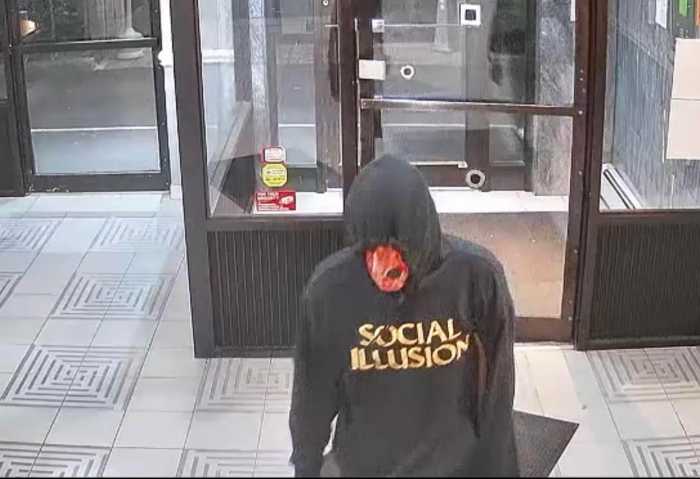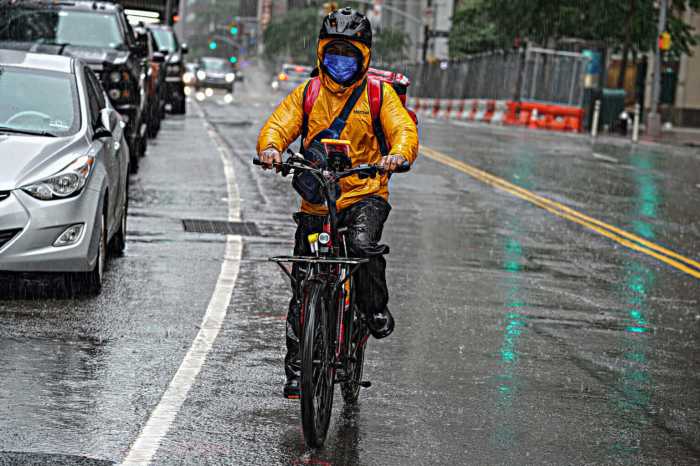
After years of reducing traffic fatalities, Mayor Bill de Blasio’s signature street safety program is failing New Yorkers in 2019.
Deaths on city streets are on pace to rise this year for the first time in the Vision Zero era, with areas like northern Queens and southern Brooklyn experiencing the most notable increases in cyclist injuries and overall traffic deaths.
There have been 65 traffic deaths in New York City through April 28, according to the most recent police data. That’s a 30% increase from the 50 traffic deaths recorded at that point last year and averages to a lost life nearly every other day of 2019.
“When I ride my bike it’s free transportation; free exercise and it’s carbon-free. It’s three wins in one — the only downside is I might get killed,” said Jacob Ouillette, an artist from Chelsea, as he biked to work in Long Island City recently.
Through mid-March, there were six cycling deaths in the city, when 10 were logged in all of 2018. Cyclist injuries are also rising. There were 968 biking injuries recorded this year, up 9.6% from last year, according to police data.
Ouillette bikes to avoid transit — the MTA is a “complete disaster” of an organization, he said — but he and others are constantly reminded of the danger that comes with their commutes. In the NYPD’s Queens North patrol borough, which includes neighborhoods like Long Island City, Astoria and Woodside, traffic fatalities have increased from 9 through April 28 last year to 13 this year.
“It’s honestly too frequent to recall just one. It happens every trip,” said Jonathan Wong, from Astoria, when asked if he remembered a recent near collision during a bike commute. Wong has become jaded after four years of biking from his home to Manhattan for his job in menswear.
“You get used to [close calls],” he said.
Just on Thursday, 3-year-old Emur Shavkator was walking in a crosswalk in Bath Beach alongside his mother when he was struck and killed by the driver of a commercial van who was making a right turn and failed to yield, according to police. Traffic fatalities in that southern Brooklyn patrol borough are up from 7 through April 28 last year to 14 this year.
Driver error — either distracted driving, speeding or the failure to yield — was the cause of at least 50 of this year’s citywide traffic deaths, or about 77%, according to police data.
De Blasio’s Vision Zero program, which aims to eliminate traffic deaths by 2024 through safe street designs and better enforcement and education, helped traffic fatalities drop from 299 in 2013 to 202 last year — the lowest number of traffic deaths ever recorded on city streets.
But advocates believe de Blasio has lost focus on his goal and will be rallying on the steps of City Hall this week to call for the mayor to redouble his commitment to protect commuters on city streets. The city has completed 139 street improvement projects under Vision Zero, but critics believe such safety features should be coming at a faster clip. Families for Safe Streets, a support group branch of the nonprofit Transportation Alternatives, is pushing for the mayor to adopt TA’s Vision Zero Street Design Standard.
The program would require the Department of Transportation to install safety infrastructure — like bike lanes or pedestrian crossing islands — whenever a street is repaved. That would bypass the city’s typical community outreach policies, an idea that has upset some community board members around the city who value sway over street projects that could impact the number of vehicle lanes or parking spaces.
“We know it’s those changes that save lives and we can’t be fighting one street at a time, investing a huge amount of effort to overcome a small minority of people who are opposed,” said Amy Cohen, of Families for Safe Streets. “Systematic change is needed and we need the mayor to step up.”
Others have become increasingly frustrated with the city’s use of its police force under Vision Zero. Kenny Lawrence, whose daughter Aurilla was killed while biking in Brooklyn earlier this year, wrote in a recent Gothamist opinion piece that he was "furious" when he learned that cyclists were being targeted in a ticket blitz following the tragedy.
"Did Mayor de Blasio not understand that many of these cyclists who were being targeted were actually headed to a memorial ride in honor of Aurilla?" he wrote.
Jon Orcutt, a spokesman for Bike New York and former DOT policy director, believes the city has already found a Dutch-inspired design that could make intersections much safer for cyclists — though it has been slow in rolling it out. The DOT began piloting the design, known as “offset crossings,” in 2017 at several intersections around the city, where paint and bollards are applied to adjust vehicle turning angles so that drivers can better see cyclists while also slowing those cars down.
Orcutt said the city should go back and add the designs to popular curbside bike lanes, like on First and Second avenues. He considers the design superior to the current standard for intersections with protected bike lanes, where turning drivers and cyclists have to mix in the same lane
“The strong critique of the mixing zones is that you’re basically a bicycle in mixed traffic at the toughest part of the route, which is the intersections,” Orcutt said. “You’re only protected from traffic for the easier, straight-ahead part.”
The DOT has pushed back against the idea behind the Vision Zero Street Design Standard and the notion of automatically installing offset crossings along protected bike lanes, reasoning that the city should not pursue a one-size-fits-all approach to street changes.
Brian Zumhagen, a spokesman at the DOT, said in a statement that the city would take action following this year’s trends, though didn’t offer details. The DOT will continue using off-set crossings where appropriate, and the city soon plans to update the mixing zones on First and Second avenues when the streets are repaved, Zumhagen said.
“We are deeply troubled by any loss of life on our streets,” Zumhagen said. “While progress on traffic safety is not always linear, we will not rest in our Vision Zero work and are committed to stepping up our safety redesigns, which along with other measures have brought fatalities to historic lows.”



































